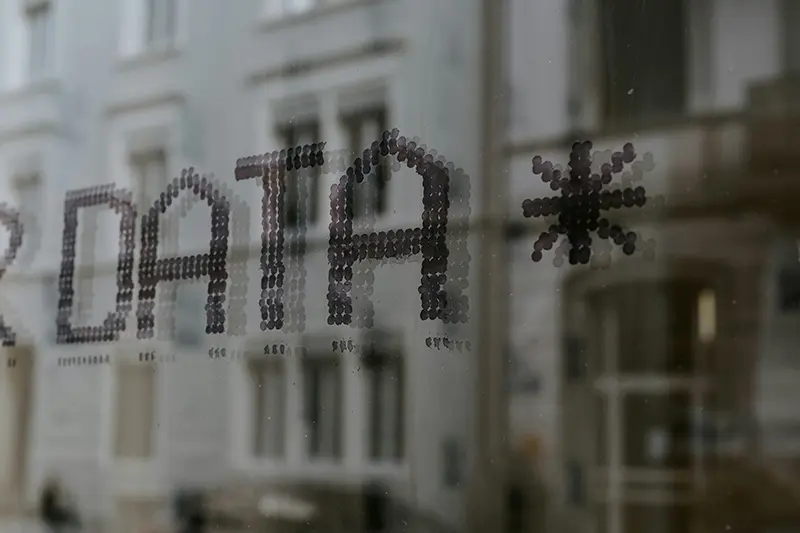Your Holiday System Knows More About Your Employees Than You Think
Right, let's talk about something that probably keeps you awake at night - or at least it should. Managing annual leave records whilst staying GDPR compliant isn't exactly the most riveting topic over your morning coffee, but get it wrong and you'll be facing some rather stern letters from the ICO and potentially eye-watering fines.
The truth is, annual leave records contain a surprising amount of personal data that's governed by GDPR requirements. From basic employee details to patterns that might reveal health conditions or family circumstances, these seemingly straightforward records can be a data protection minefield if you're not careful.
In this guide, we'll walk through what you actually need to know about GDPR compliance for annual leave records, without the legal jargon that usually accompanies these topics. We'll cover retention periods, employee rights, security measures, and practical steps you can take to ensure you're not accidentally creating compliance headaches for yourself.
Understanding What Data You're Actually Collecting
Before we dive into the compliance requirements, let's be honest about what annual leave records actually contain. Yes, there are the obvious bits - names, dates, duration of leave. But modern leave management systems often capture much more than that.
Think about it: you've got approval workflows (showing management hierarchies), reasons for leave (which might reveal medical conditions), patterns of absence (potentially indicating personal circumstances), and often integration with payroll systems that link to broader employee data. Under GDPR, all of this counts as personal data, and some of it falls into the 'special category' bucket that requires extra protection.
The key insight here is that your annual leave system isn't just about tracking holidays - it's potentially one of the richest sources of personal data about your employees' lives that you've got.
Legal Basis: Why You're Allowed to Process This Data
Here's where it gets interesting from a legal perspective. Most organisations rely on 'legitimate interests' as their legal basis for processing annual leave data, though employment contract obligations also come into play.
For legitimate interests to work, you need to demonstrate that your need to process the data outweighs the employee's privacy rights. Fortunately, managing statutory holiday entitlements and ensuring adequate staffing levels usually passes this test without too much difficulty.
"The employer's duty to comply with a request extends to any personal data retained by their organisation... This can include information contained in HR records, pension records, or even internal communications and emails where the employee is specifically referenced." - DavidsonMorris employment law guidance
However, you'll still need to conduct a Data Protection Impact Assessment (DPIA) because employee data involves both sensitive information and a power imbalance between you and your staff. Most HR departments need to do this anyway, so your annual leave processing can usually piggyback on your broader employee data DPIA.
Retention Periods: How Long Should You Keep Leave Records?
This is probably the most practical question you're grappling with, and thankfully, there are some reasonably clear guidelines. The ICO's guidance on storage limitation emphasises that you shouldn't keep personal data longer than necessary, but what does that actually mean for annual leave records?
The consensus among employment lawyers and HR professionals is that annual leave records should be retained for at least two years, but many organisations opt for longer periods to align with broader employment record retention policies.
Practical Retention Guidelines
Here's what most UK employers are doing:
- Basic annual leave records: 2-6 years after the end of employment
- Statutory leave records (maternity, paternity, etc.): 5 years from birth or adoption
- Sick leave related to annual leave calculations: 3-6 years after employment ends
- Leave records tied to legal claims: At least 8 months after employment ends (to cover tribunal claim periods)
The safest approach is to align your annual leave retention with your broader personnel file retention policy - typically six years after employment ends. This covers most legal requirements whilst being administratively simpler than having different retention periods for different types of leave data.
Employee Rights: What Your Staff Can Request
Your employees have several rights regarding their annual leave data, and it's worth understanding these before you receive your first Data Subject Access Request (DSAR) at 4:55 PM on a Friday.
Right of Access
Employees can request copies of all personal data you hold about them, including their complete annual leave history, approval emails, and any internal communications that mention them by name. You've got one month to respond, and the request doesn't need to use magic words like "GDPR request" - a simple "Can I see my holiday records?" counts.
The practical challenge here is that leave records are often scattered across multiple systems. Centralised leave management systems make responding to these requests much more straightforward than trawling through spreadsheets, emails, and legacy systems.
Right to Rectification and Erasure
If leave records are incorrect, employees can demand you fix them. They can also request deletion in certain circumstances, though you can refuse if you need the data for legal compliance or defending potential claims.
A word of caution: employees sometimes request deletion of leave records as part of employment disputes. You're not obliged to comply if you have legitimate business reasons for retention, but you need to be able to justify your refusal.
Security Measures: Protecting Leave Data
Annual leave data might seem less sensitive than payroll or health records, but it still requires appropriate technical and organisational measures to keep it secure.
Technical Safeguards
Your leave management system should include role-based access controls (not everyone needs to see everyone's leave history), audit trails showing who accessed what and when, and encryption for data at rest and in transit. If you're still using spreadsheets shared via email, it's time for an urgent conversation with your IT department.
Organisational Measures
Staff training is crucial here. Your team needs to understand that leave patterns can reveal sensitive personal information, and that casual chat about who's taking leave when can constitute a data protection breach.
Regular access reviews are also essential - when people change roles or leave, their access to leave management systems should be updated accordingly. It's surprisingly common to find that former employees or people who've moved departments still have access to leave data they shouldn't.
Practical Compliance Steps
Let's get down to brass tacks. Here are the practical steps you should take to ensure your annual leave records are GDPR compliant:
Documentation and Policies
Update your privacy notices to specifically mention annual leave processing, including your legal basis, retention periods, and employee rights. Your staff handbook should also include a section on leave data protection.
Maintain a record of processing activities that covers your leave management - this is legally required if you have more than 250 employees, and good practice regardless of your organisation size.
Regular Reviews
Schedule annual reviews of your leave data retention. This isn't just about deleting old records - it's also about checking that you're not keeping more data than you need and that your retention periods still make sense for your business.
Review access permissions quarterly. People change roles, responsibilities shift, and what seemed like appropriate access six months ago might not make sense today.
Incident Response
Have a plan for data breaches involving leave records. If someone accidentally emails the entire company's leave history to the wrong person, you need to know how to respond quickly and whether you need to notify the ICO.
"You must inform the ICO of any personal data breach without undue delay (and, where feasible, within 72 hours of becoming aware of it), unless the breach is unlikely to result in a risk to the rights and freedoms of individuals." - Make UK GDPR guidance for employers
Common Pitfalls and How to Avoid Them
From our experience helping organisations with GDPR compliance, here are the most common mistakes we see with annual leave records:
Over-retention: Keeping leave records "just in case" without a clear business justification. If you can't articulate why you need seven-year-old holiday records, you probably don't.
Access creep: Gradually expanding who can see leave data without reviewing whether they actually need it. Your office manager probably doesn't need access to everyone's leave history.
Integration oversight: Failing to consider how leave data integrates with other systems. When leave affects pay calculations, performance reviews, or pension contributions, you need to think about the data flows holistically.
DSAR panic: Treating every access request as a crisis instead of having a clear, documented process. Most access requests are straightforward if you're prepared.
Looking Forward: Building Sustainable Compliance
GDPR compliance isn't a one-off project - it's an ongoing responsibility that needs to be built into your day-to-day operations. For annual leave records, this means choosing systems and processes that make compliance easier rather than harder.
Modern leave management platforms can automate much of the compliance burden - from automated data retention to audit trails that make responding to access requests straightforward. The key is choosing solutions that understand GDPR requirements from the ground up rather than trying to retrofit compliance onto systems that weren't designed with privacy in mind.
Regular training for your HR team is also crucial. GDPR requirements evolve, and new guidance from the ICO can change how you should approach specific situations. What seemed compliant last year might not meet this year's standards.
Finally, remember that GDPR compliance is ultimately about respecting your employees' privacy rights whilst enabling your business to function effectively. It's not about creating bureaucratic barriers - it's about being thoughtful and transparent about how you handle personal data.
The goal isn't perfect compliance (an impossible standard), but demonstrable, good-faith efforts to protect your employees' data whilst meeting your business and legal obligations. Get the fundamentals right - clear policies, appropriate retention periods, proper security measures, and responsive handling of employee requests - and you'll be well-positioned to handle whatever data protection challenges come your way.
Most importantly, don't let perfect be the enemy of good. It's better to have a simple, well-implemented approach to leave data compliance than a complex system that nobody understands or follows consistently.





